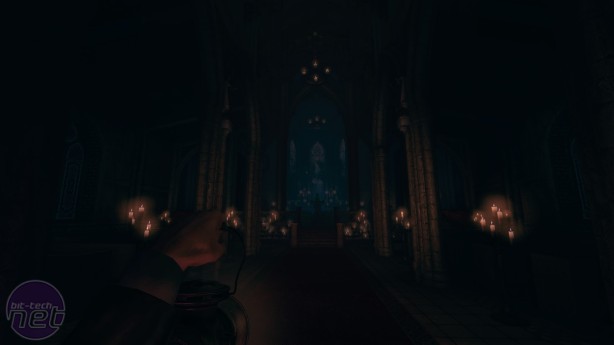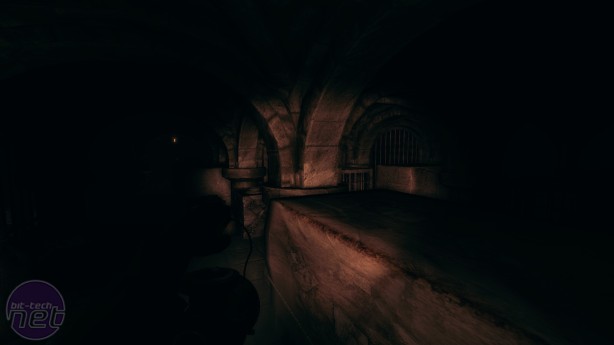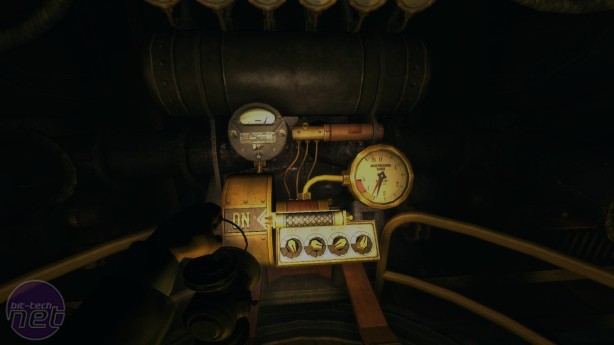Amnesia: A Machine For Pigs Review
September 9, 2013 | 15:08
Companies: #thechineseroom #thechineseroomroom

Amnesia: A Machine For Pigs Review
In fact, the times when you're actually in trouble are few and far between, but when you are in trouble, it's mariana-trench deep. Because of this, tension is cranked tight throughout. It never lets you become comfortable or familiar with your environment, the surroundings only become more oppressive, more unsettling the longer you spend in them. This is the essence of Amnesia, and TheChineseRoom have distilled it and bottled it expertly. In particular, there's a cameo from one of the more famous of Amnesia's creations that is very smartly handled indeed.So far, so good, and it's important to emphasise that if you're interested in A Machine For Pigs either for its story, or to test how much stimulation your nervous system can take before it shorts like an over-stuffed plug socket, then sign the relevant liability waivers and step this way. If you're here to play a game, however, you might be a tad disheartened.
Much of what made The Dark Descent such a fascinating experiment in horror gaming has either been slimmed down or stripped out completely. To be fair, some of this is logical. For example, The Dark Descent featured tinderboxes which you used to light your way, alongside a lantern that needed to be refuelled. But you couldn't, say, light a candle and then take it with you, which made about as much sense as a crystal football. Here, you've just got a lantern, and it doesn't run out of fuel, although it does flicker unsettlingly at the worst (and therefore best) possible moments.
This is a good and sensible refinement. However, A Machine For Pigs goes much further. The extent to which you can interact with your environment has been significantly reduced too. The physics-based opening of doors and drawers by clicking on the object and dragging the mouse is still present, but there seem to be considerably fewer objects to use them on. It's also far more linear than the previous game, with a ridiculous number of locked doors. Even with the new outdoor sections, there's very little exploration here.
But A Machine For Pigs' worst crime is that the brilliant, wonderful, fantastic, all-of-the-superlatives insanity system that made The Dark Descent such a compelling horror game has been removed entirely. To briefly explain, this system meant witnessing horrific scenes, or being discovered by enemies, would cause the player character to lose sanity, which in turn caused hallucinations and eventually affected your ability to move and function. At the same time, hiding in the dark for too long would also cause you to lose sanity. These opposing systems resulted in you constantly, precariously balancing on the ledge of madness, as you scrambled nervously through the shadows, averting your gaze from the game's horrors while simultaneously trying to find your way around.
For this great mechanic to be abandoned by TheChineseRoom is an enormous disappointment, and makes the game feel like an (admittedly very effective) ghost train. Dear Esther got away with its lack of interactivity because it was novel and experimental. In Amnesia, how you interact with the environment and how that environment affects you is a crucial facet of the game, and for that to be ejected rather than enhanced is just so deflating.
A Machine For Pigs is two thirds of a perfect sequel to The Dark Descent. It's twisted, disturbing and at times capable of inducing outright panic. Its tale is intelligently told, with characters that manage to be both relatable and despicable. But as a game it has been overly restrained. Its mechanics have been muzzled, its systems wrapped in a straightjacket and locked away in a padded cell, forgotten. Of all the tragedies that occur in A Machine For Pigs, this is the most upsetting.
-
Overall66 / 100


MSI MPG Velox 100R Chassis Review
October 14 2021 | 15:04












Want to comment? Please log in.